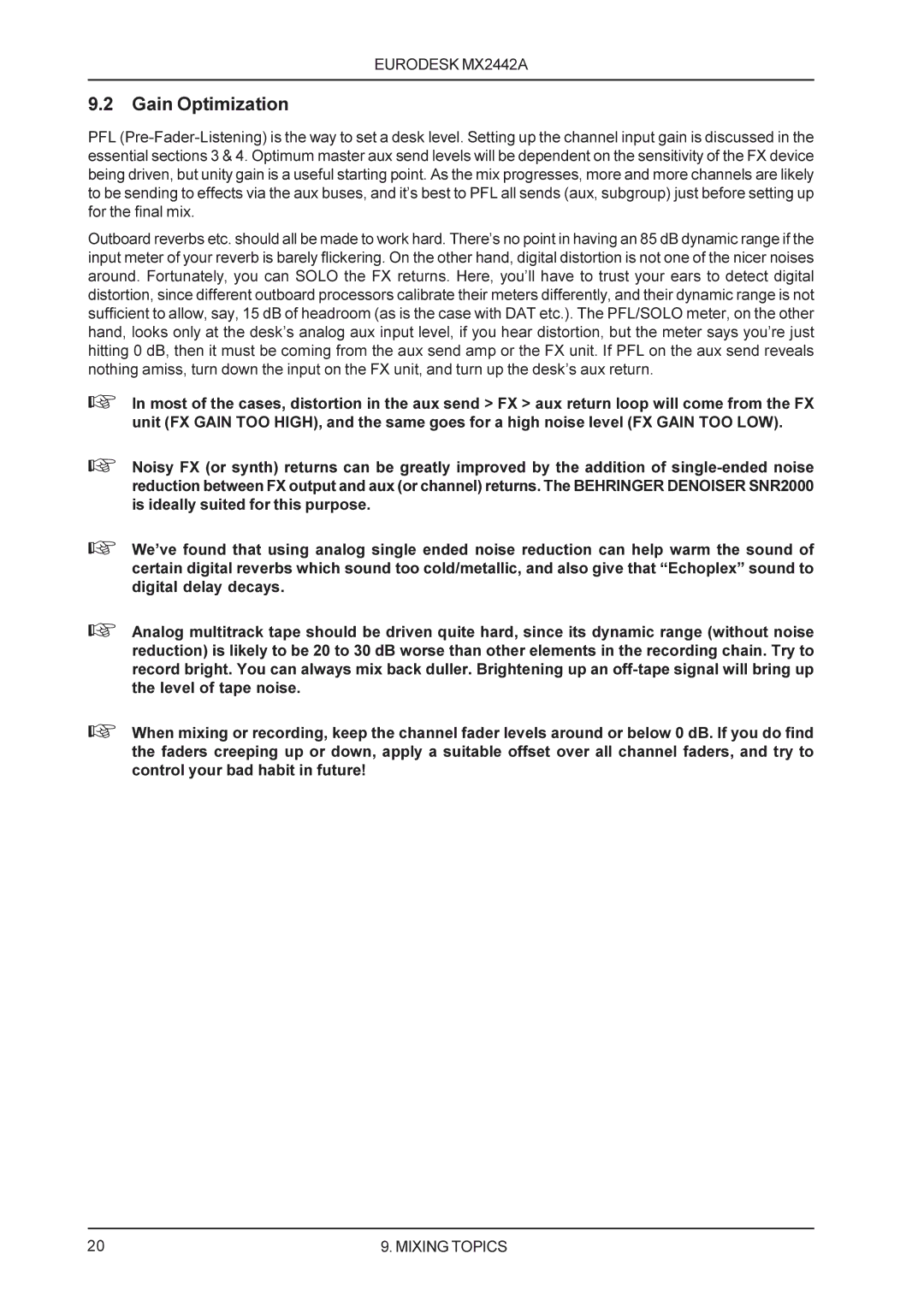
EURODESK MX2442A
9.2 Gain Optimization
PFL
Outboard reverbs etc. should all be made to work hard. There’s no point in having an 85 dB dynamic range if the input meter of your reverb is barely flickering. On the other hand, digital distortion is not one of the nicer noises around. Fortunately, you can SOLO the FX returns. Here, you’ll have to trust your ears to detect digital distortion, since different outboard processors calibrate their meters differently, and their dynamic range is not sufficient to allow, say, 15 dB of headroom (as is the case with DAT etc.). The PFL/SOLO meter, on the other hand, looks only at the desk’s analog aux input level, if you hear distortion, but the meter says you’re just hitting 0 dB, then it must be coming from the aux send amp or the FX unit. If PFL on the aux send reveals nothing amiss, turn down the input on the FX unit, and turn up the desk’s aux return.
+In most of the cases, distortion in the aux send > FX > aux return loop will come from the FX unit (FX GAIN TOO HIGH), and the same goes for a high noise level (FX GAIN TOO LOW).
+Noisy FX (or synth) returns can be greatly improved by the addition of
+We’ve found that using analog single ended noise reduction can help warm the sound of certain digital reverbs which sound too cold/metallic, and also give that “Echoplex” sound to digital delay decays.
+Analog multitrack tape should be driven quite hard, since its dynamic range (without noise reduction) is likely to be 20 to 30 dB worse than other elements in the recording chain. Try to record bright. You can always mix back duller. Brightening up an
+When mixing or recording, keep the channel fader levels around or below 0 dB. If you do find the faders creeping up or down, apply a suitable offset over all channel faders, and try to control your bad habit in future!
20 | 9. MIXING TOPICS |
